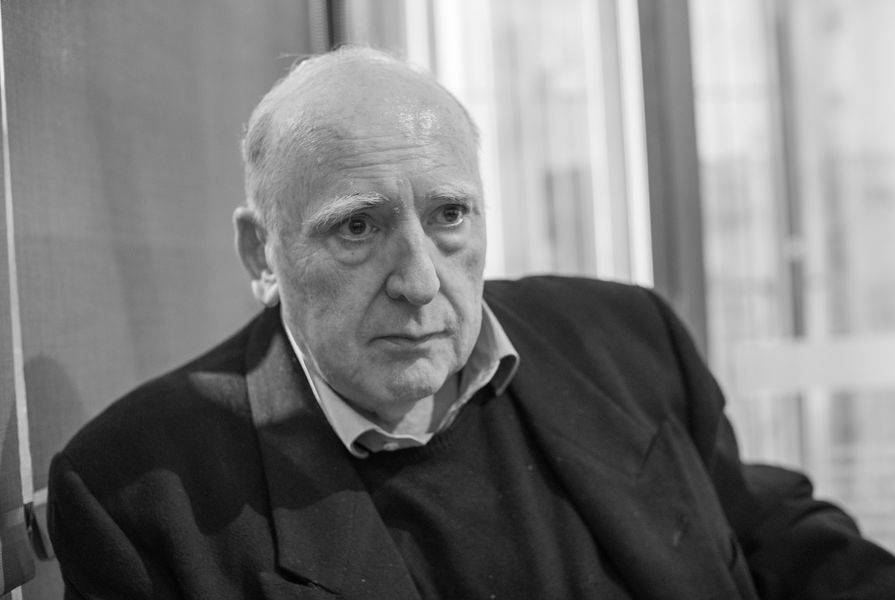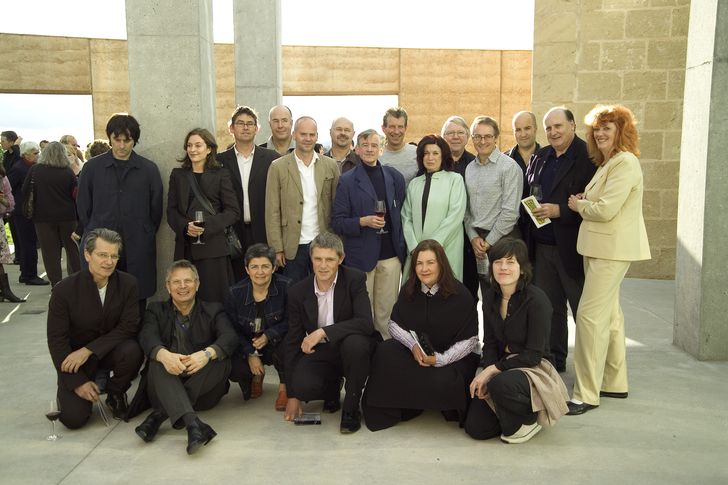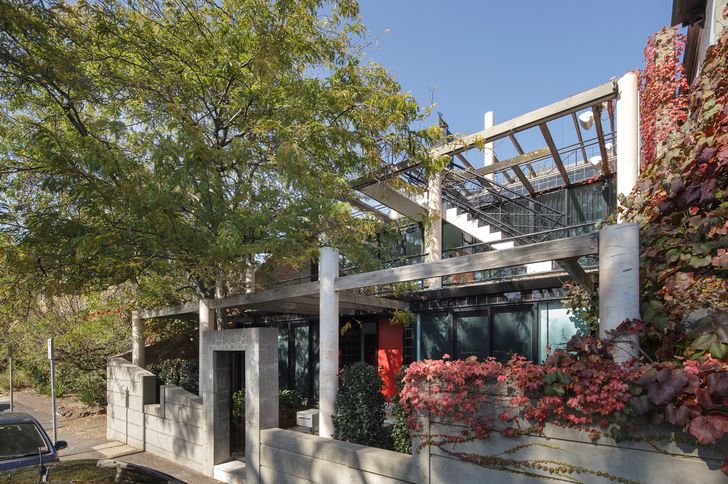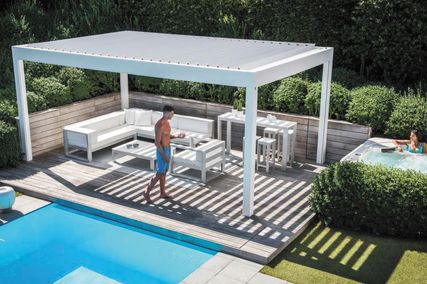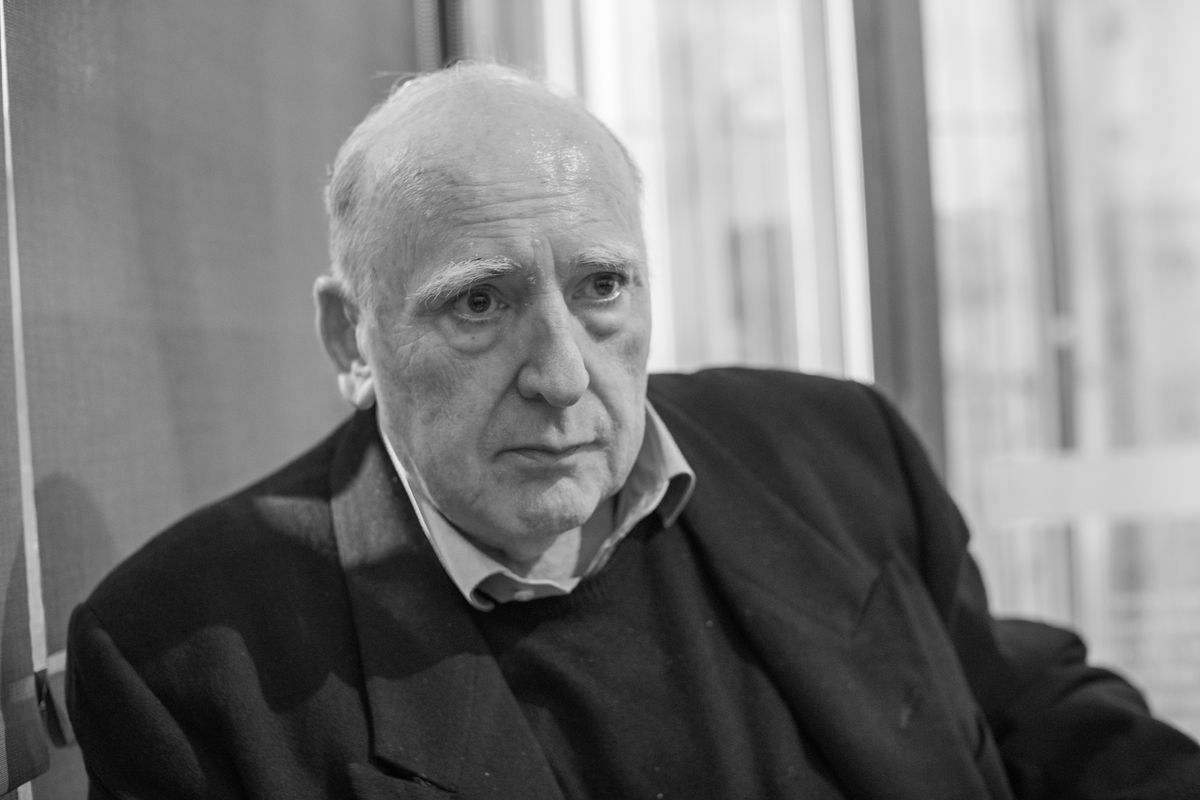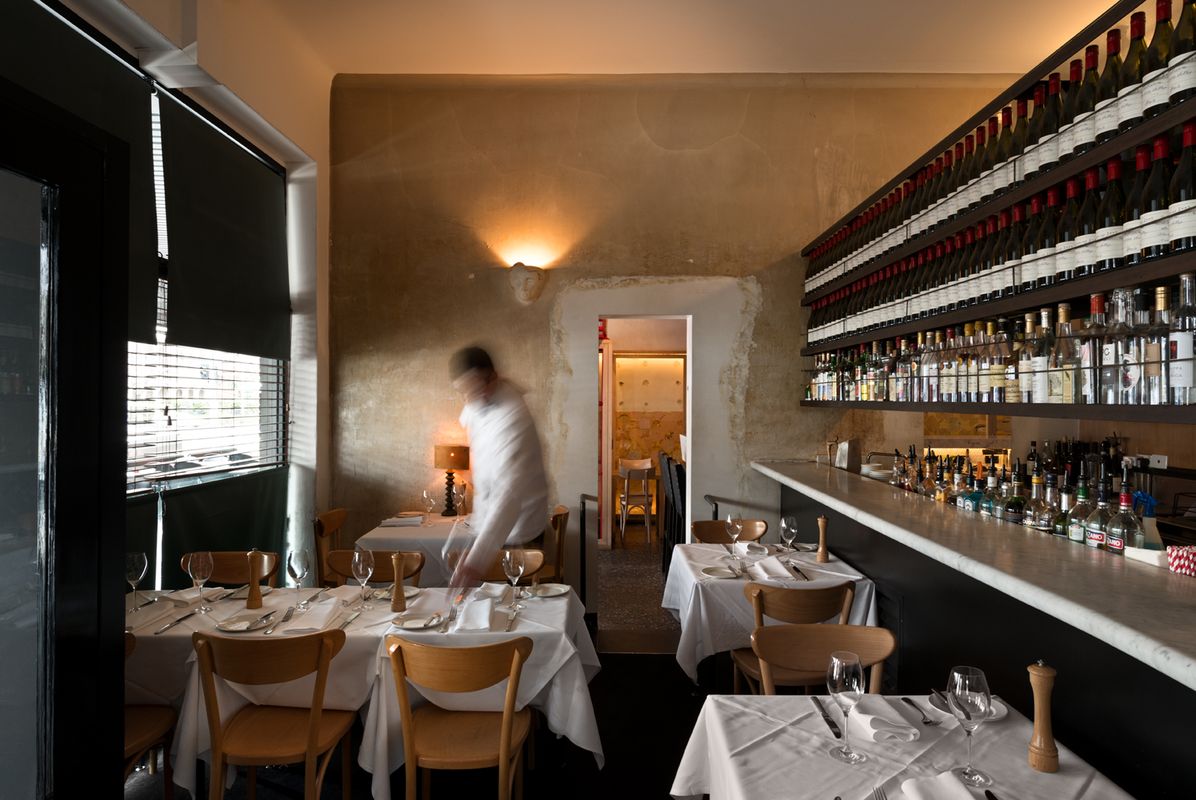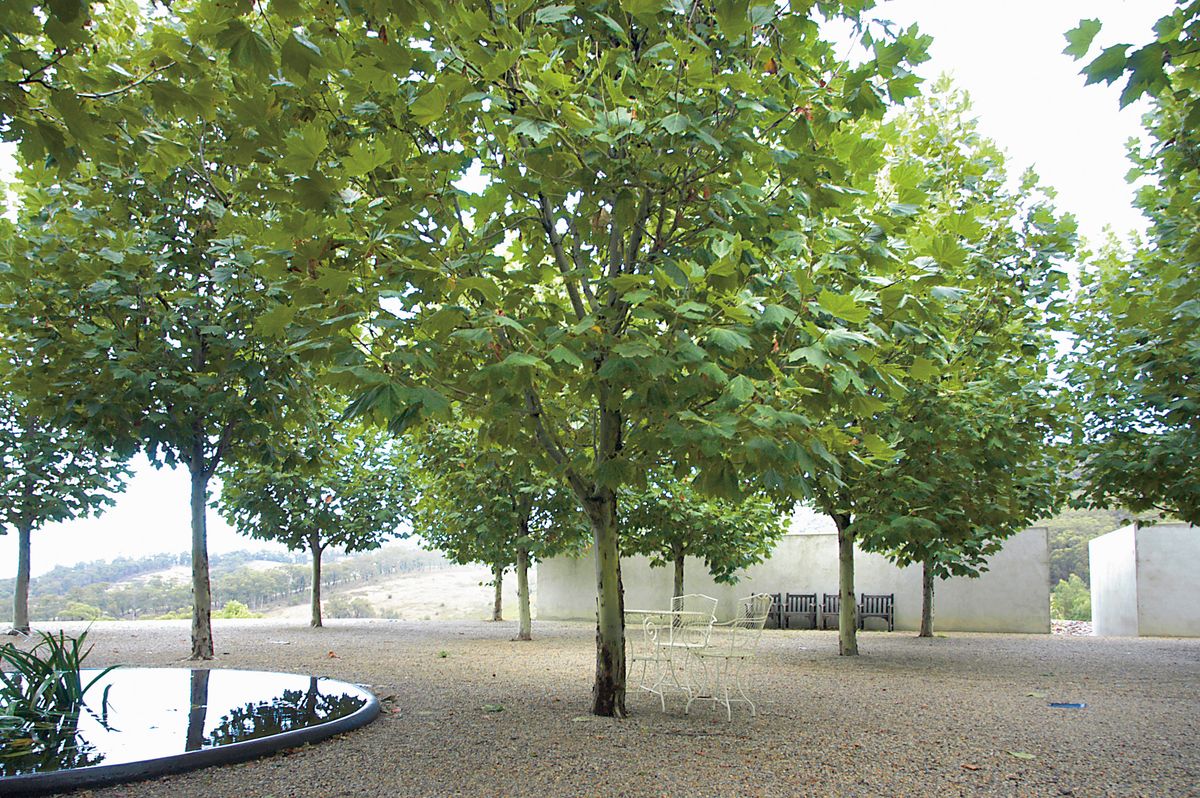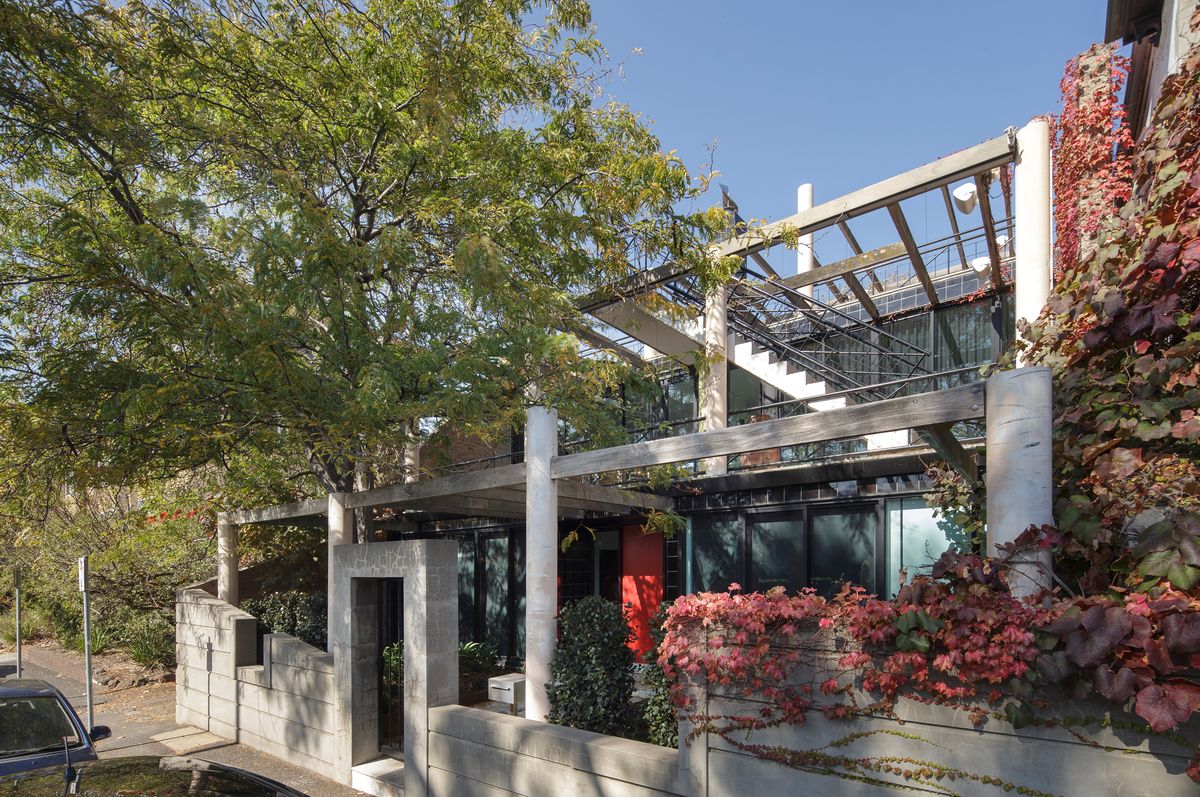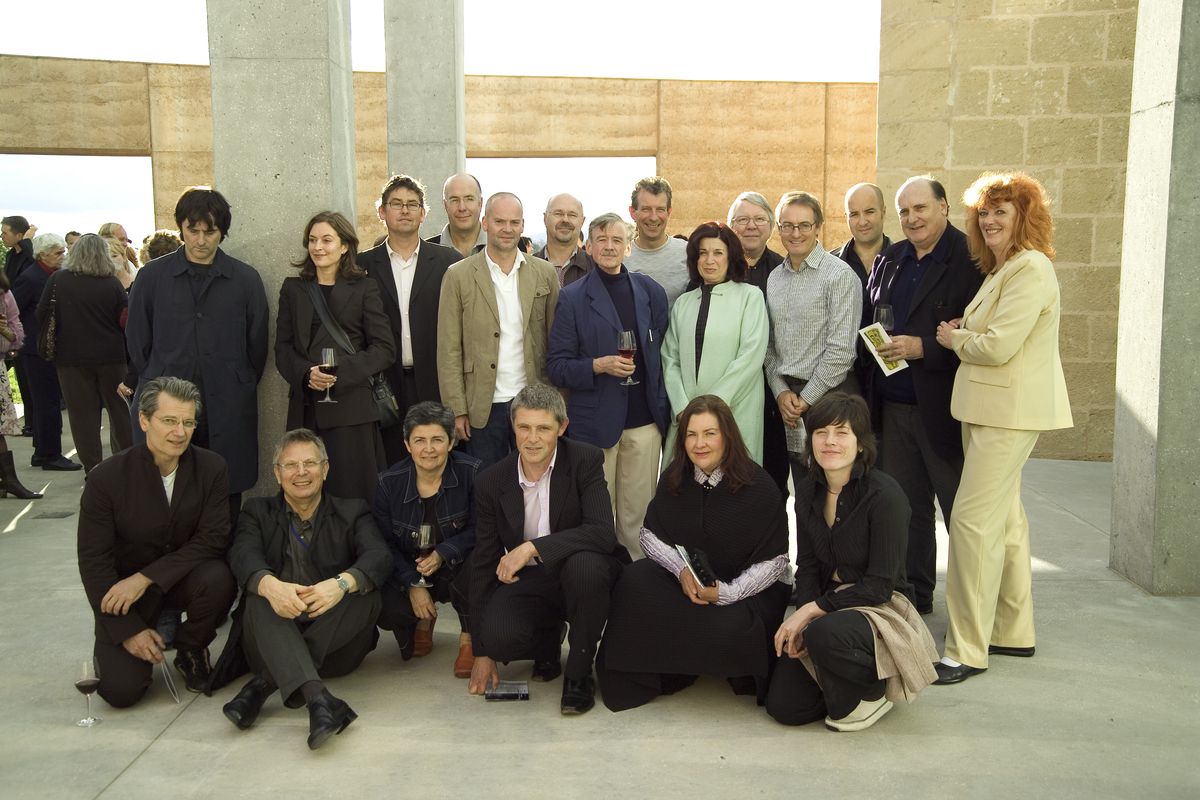Primarily interested in the states of mind into which his designs could set people, Allan Powell pursued a singular path in architecture. He was delighted when told that architect visitors from Europe, who sat in St Kilda’s Di Stasio restaurant (1988) soon after it opened, took an hour to realize that the beguiling interior had been designed. (Exactly what Powell had hoped for, when he had designed it!) Explaining this, he talked of his childhood in St Kilda – he was “lost in amazement at the way in which the late afternoon sun would pick up the wide tarmac surface of Fitzroy Street and match this with the surface of the bay, shimmering gold beyond.” Further: “At Luna Park [I] would walk through a turquoise wall into a yellow room, step onto a red platform and encounter a toy train. The dislocation of and the extreme sensate stimuli created an environment in which all functionality seemed lost. [I] determined that effects such as these that crowded in on [me] from all sides in [my] childhood were what architecture was about.”1
In this belief, Powell created a body of work much admired by clients and lay cognoscenti as well as colleagues in Europe, if seldom acclaimed by the local architectural establishment. He rather liked being on the outer, describing with some delight how other architects looked at his buildings and could not see anything there. He relished too the concealment of the details that often delineated works in which other architects prided themselves. Builders, he said, would complain that he gave them little to go on other than, for example, achieving a perfectly illimitable surface that made a shimmering boundary to an “umbracious” space. He read voraciously, chiefly novels dealing with social mores, and often referred to Henry James or Emily Dickinson or, lately, Jonathan Franzen. A keen observer of the way we live, he admired the ease with which Guilford Bell’s plans handled the social nuances of Australian life.
Di Stasio restaurant in St Kilda (1988).
Image: Dianna Snape
What did he mean by “states of mind”? Pressed, he resorted to negatives: “Mies’s perfection of detail and logic … is precisely what [I] am not aiming at. Scarpa’s obsessive detailing might be hinting at and revealing dark, involuted processes, but it is too prescriptive, it tells you what to experience, it does not set you in a state of mind.”2 He sought “surprise, [to] dislocate reason … [to] dumb down arousal … [to enable us to] see new patterns: poetry, theatre, and architecture present multi-meaning states…” He wanted entering one of his buildings to be like stepping onto a boat and thus embarking – with a mental steadying of your footing – on “dream-like states in which detail is acute but slippery.” Further: “In these states of mind there are multiple layers of meaning that deactivate emotional arousals, [resulting] in several streams of arousal at the same time … greed, hatred, anger, sexual longing … melt away.” Of the entry to Tarrawarra Museum of Art (2003), he said: “You are confronted by a gently curving wall … Nothing there …”3
Allan Powell and a group of architects at the Tarrawarra Museum of Art (2003).
Image: John Gollings
“Prosaic in plan”, Powell’s designs consisted of “apollonian forms placed in a field, low energy, low meaning, a symphony of horizons.” He aimed at an architecture that “you make yourself.” “Searching for completion the imagination scans the brain and makes metaphysical images from whatever can be called up from memory. While we are so ‘contained’ this is the reality that we are aware of.” This reality, he claimed, “feels profoundly richer than the reality outside.”
He abjured plan types: “I don’t know what a house is …” claimed this designer of many of the most wonderful houses in Melbourne – among them, the Di Stasio House (1993) and the Davies House (2003). He might have said the same for his public buildings, which include two buildings for RMIT University: Building 94 (1996) and the Bundoora West Lecture Theatre (2013). Much loved, they too deal in “states of mind.” He wanted each work to be a “masque or tableau made of the highlight from a car, a pile of wood, a puddle, the sun’s setting rays …”4
Crigan House (1989).
Image: John Gollings
Those who spend time in an Allan Powell space will know precisely what all of this means. Like some of his Italian peers, Powell had a love of the decorative arts. He collected art glass and also had a remarkable collection of paintings, including some by both Jenny Watson and Peter Booth. At his home, where the rooms had the indeterminate quality he loved, these paintings were leant in stacks against the walls. It was as if hanging them would tie them down, ending their autonomy as created entities. Hanging them would delimit the wall surfaces, making them merely walls, rather than calm apollonian forms, lodged on the platform upon which the house was assembled. Allan Powell created a very particular architecture, one that Australia will do well to cherish.
1. Leon van Schaik, Mastering Architecture: Becoming a Creative Innovator in Practice (Melbourne: John Wiley & Sons, 2005), 142.
2. Leon van Schaik (2005), 145.
3. Conversation between Allan Powell and Leon van Schaik, recorded on an ideogram dated 7 July 2003.
4. Conversation between Allan Powell and Leon van Schaik (2003).

